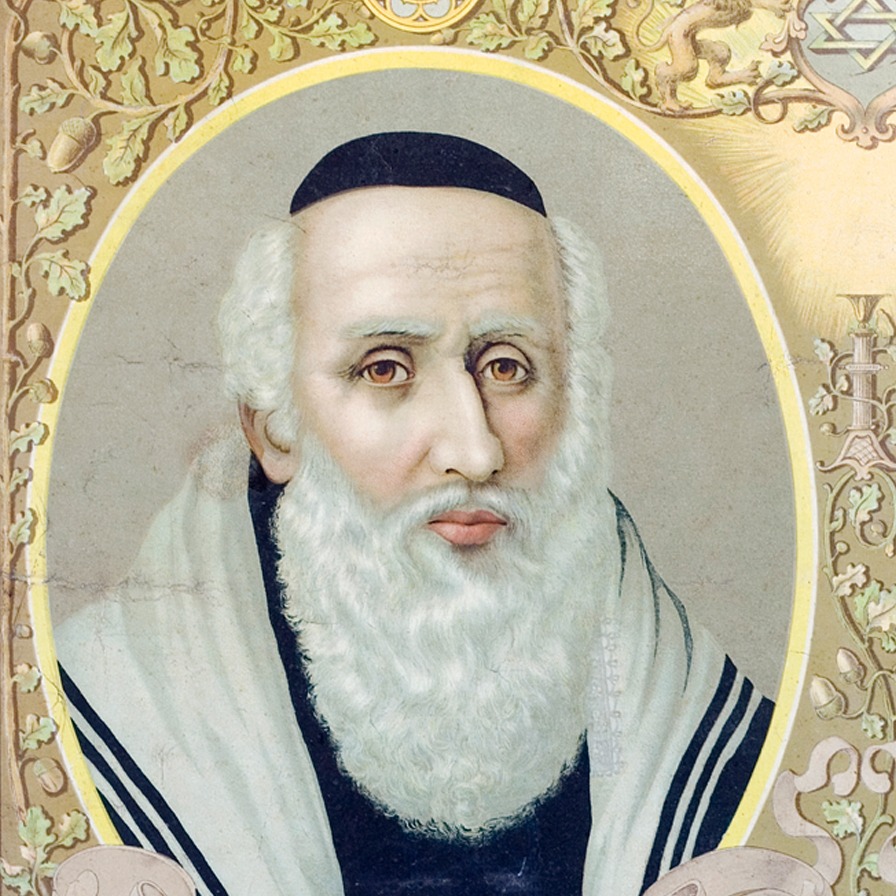Vilna Gaon Elijah ben Solomon Zalman (1720-1797) |
← |
The name of Vilna Gaon Elijah ben Solomon Zalman (1720-1797) is very well known to the majority of the population in Lithuania. In 2020, we are celebrating the year of the Vilna Gaon and of the history of the Jews of Lithuania, which offers a great opportunity for us to reflect on why this name is so important to Jews around the world.
Elijah ben Solomon Zalman was born into a rabbinical and scholarly family in the village of Sialiec in what is now known as Belarus. Elijah Solomon Zalman started showing signs of talent very early, and after briefly attending a Jewish primary religious school heder, at the age of seven, he went to study under Rabbi of Keydan (Kėdainiai) Moses Margaliot. As an exceptionally gifted child, he was able to study independently from a very early age. Vilna Gaon’s ascetic and solitary lifestyle became his hallmark: he devoted most of his time for his studies in seclusion, which, however, did not stop the word about his incredible wisdom from spreading. Despite his modesty, the Vilna Gaon was regarded as an authority, and other European religious sages turned to him for advice in resolving religious disputes between them.
The Vilna Gaon was interested not only in religious scholarship, he was also knowledgeable in secular sciences, which he saw as a great aid to better understand religious texts. He studied grammar, mathematics, astronomy and other subjects. No matter how much engrossed in the study of religious texts he was, the sage would always stand for the cause he saw as important. The Vilna Gaon became the guardian of the Lithuanian tradition of Judaism, and he is known for his opposition to Hasidism, the movement of Judaism that criticised strict religious asceticism, sought to change the order and form of rites and gave less importance to the study of religious texts. The Vilna Gaon regarded Hasidism as heresy, and his authority contributed to the fact that Hasidism was prevented from gaining grounds in Lithuania compared to Ukraine for example, which in fact gave rise to this movement. Due to their opposition to Hasidism, the Jews of Lithuania were called Misnagdim (Heb. contradicting).
The Vilna Gaon can be mistakenly seen as a communal figure with most likely an important official post in the town, but in fact, he never held any office: he was neither a rabbi of the town nor a judge of a religious court nor a head of a yeshiva (a spiritual seminary of rabbis). Nevertheless, he was the highest religious and moral authority. It is also interesting that the Vilna Gaon did not write or publish his books during his lifetime, as he gave all his time and efforts for his studies. All the works attributed to him were written down by his relatives and students after his death.
The Vilna Gaon was a mystified personality surrounded with many myths and legends. One of them continued particularly long, right up to the interwar period telling about the Vilna Gaon and Golem (a mythical clay creature common in Jewish folklore). The legend had it that the Vilna Gaon made Golem of clay and brought it to life by placing a special note within its head, then asked it to provide the Jews in Vilnius with fish for the Sabbath and to protect them from anti-Semitic attacks. As the times calmed down and there was no shortage of fish, the Vilna Gaon removed the note from Golem’s head, turning it again into a dead clay figure. During the interwar period, the Jews of Vilna were saying that the clay figure was lying in the attic of the Great Synagogue of Vilna waiting to be brought back to life by another sage like the Vilna Gaon to help Jews in times of calamities or emergency in the town.
The Vilna Gaon was seen by the Jews as a symbolic figure embodying hope and faith. The fact that the Vilna Gaon can be proudly owned by Vilna is hardly accidental, as it was the very spirit of the town that had helped the Gaon to grow and mature as a sage, while his name and reputation put Vilna on the map of the world as one of the most important Jewish centres.
| ↑ | ← |

